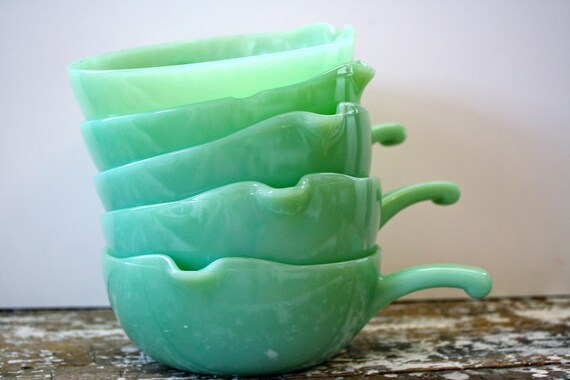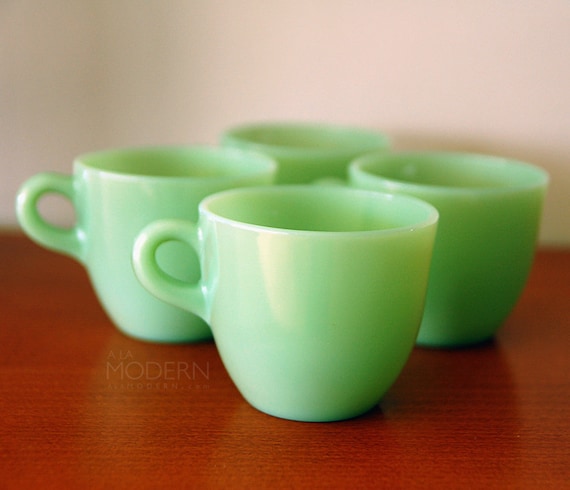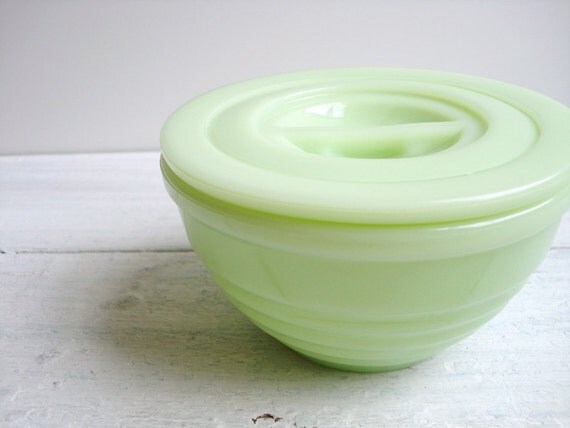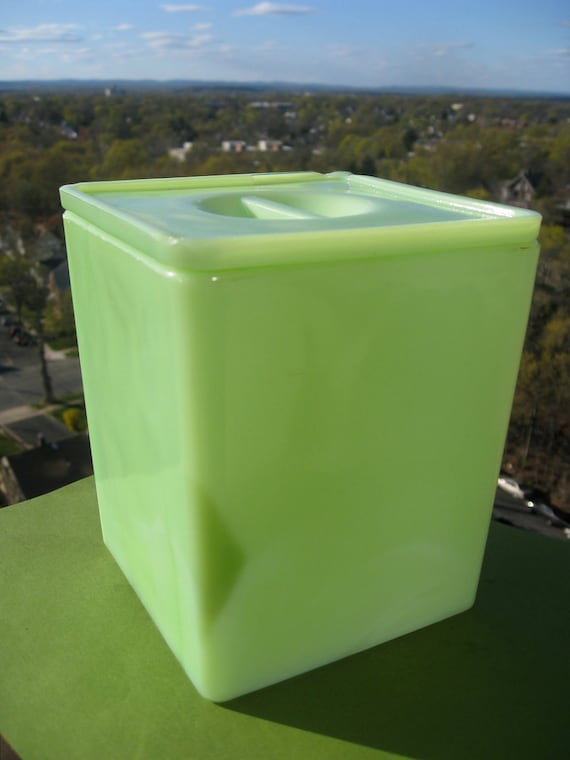Gauge actually was once my kitty, when he was just a little guy, him and I (tried) to move to Boston. When my parents dropped me off, my mom was sobbing. I thought it was just because she was leaving me off in another far away city. Turns out, she was upset because Gauge was going to have to now live with me, my roommate and my roommate's two cats. Now, my old roomie will even admit, her cats were down right mean cats! So I decided that my parents could take him back to NY to live the life of a spoiled rich cat, instead of a poor, starving, apartment dwelling, dirty cat getting beat up by two big meanie head cats (haha) So, he has had quite the spoiled life. Living it up in the lap of luxury for the past 14 years. I love my Gauge, such a good boy.
Anyway - so I was at my parent home, which is just simply a gorgeous home full of rooms no one walks in and antiques that would make an antique dealer drool.
One of my favorite pieces is this jadeite cake stand. It's just beautiful. I have always loved Jadeite. So it is my topic for MCM today.
Jadeite was originally manufactured between the 1930's - 1970's. Did you know that in the 30's women were able to get jadeite in containers of Quaker Crystal Wedding Oats, can you imagine if we could do that today?
"The glassware initially came into fashion because it was durable and cheap to produce. McKee was the first to manufacture jadeite, but the Jeannette Glass Company is credited for coining the name. However, Anchor Hocking Glass Corporation became its largest producer. In 1942, Anchor Hocking debuted the popular Fire-King line in a variety of colors, but jadeite (or “Jade-ite” as the company calls it) remained in high demand for 30 years.
The stain- and heat-resistant tableware was served in frugal diners across America. Additionally, restaurant owners could save money by serving coffee in thick-rimmed “cheater mugs” that appeared to hold more than they actually did. The simple design of the Anchor Hocking Restaurant Ware was one of the most popular lines produced from 1950 to 1956. Today, Restaurant Ware is also the most collected, in part because of its sheer abundance.
Collectible jadeite pieces come in many forms and, as usual, the hardest to find items fetch the highest prices. Whereas mugs generally sell for around $20, a Fire-King grease jar can run $100. A set of four nesting bowls in mint condition may sell for $200.
A keen eye can tell the difference between vintage jadeite and department store knock-offs. You can identify the maker (and worth) of most pieces by examining the markings on the underside: “McK” in a small circle indicates McKee, and a “J” inside a triangle indicates Jeannette Glass Co."
(source)
jeannette jadeite
(my mom has a set of these as well - but this one is sold here )
Here is also a website to give you a little insight into reproductions and what to look for if you are going to start collecting jadeite.
I simply love the stuff. I'm envisioning an all white kitchen with only pops of jadeite. That would be my dream kitchen.







